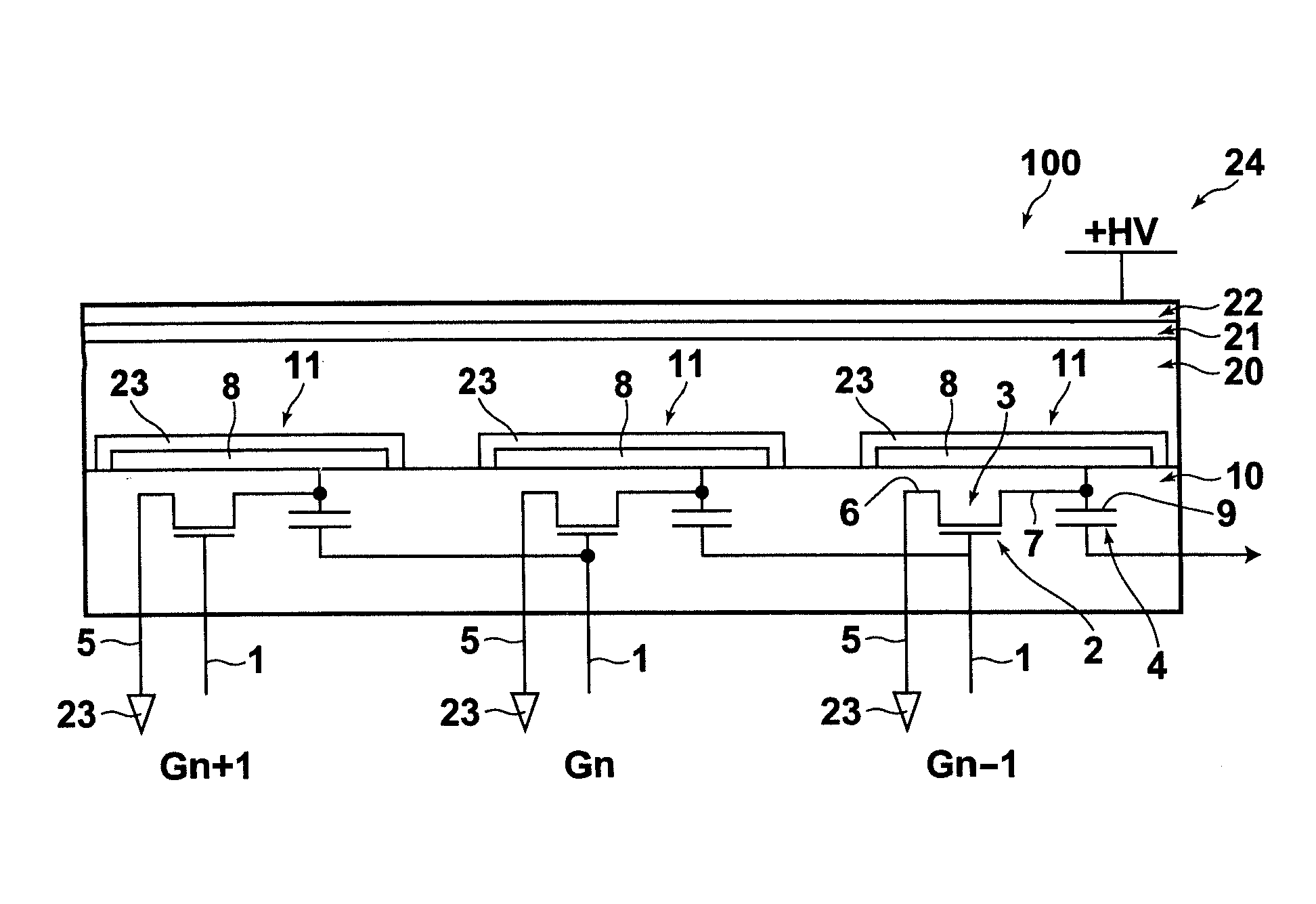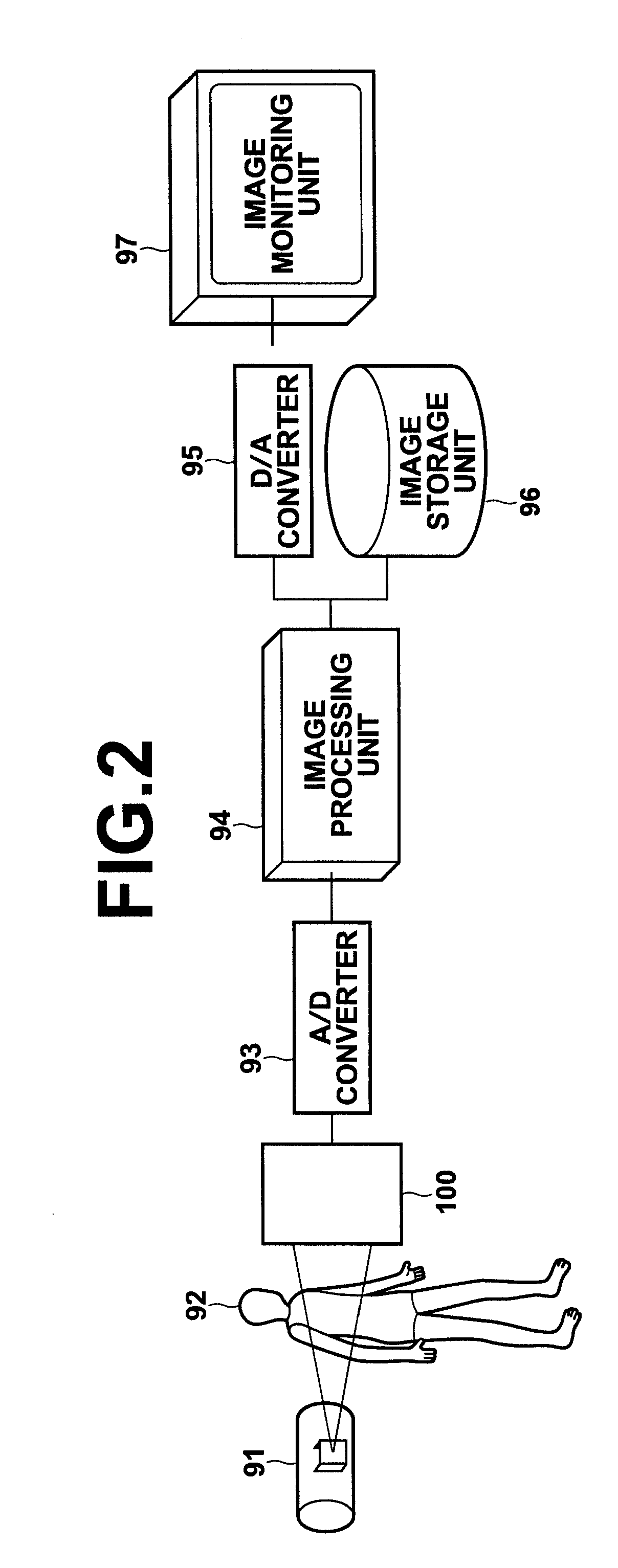Radiation image detector
a detector and radiation image technology, applied in the direction of instruments, radiation controlled devices, optical radiation measurement, etc., can solve the problems of increasing production costs, not practicable, and the pixel size is limited to around 100 m squar
- Summary
- Abstract
- Description
- Claims
- Application Information
AI Technical Summary
Benefits of technology
Problems solved by technology
Method used
Image
Examples
first embodiment
[0046]Hereinafter, the radiation image detector of the present invention will be described with reference to the accompanying drawings.
[0047]A flat panel image sensor, as the radiation image detector of the present embodiment, is an image sensor capable of detecting an image represented by X-rays or the like, and is used, for example, in X-ray imaging equipment that creates a picture of an X-ray image transmitted through a human body or the like. It is noted that the radiation image detector of the present invention is not necessarily limited to the flat panel type, and includes an image sensor with a curved surface substrate.
[0048]That is, for example, an X-ray transmission image of a subject 92 formed by X-rays outputted from an X-ray tube 91 is converted to image signals by a radiation image detector 100 of the present embodiment, in which photoelectric conversion elements are disposed in a two dimensional array, as illustrated in FIG. 2.
[0049]Analog image signals outputted from ...
third embodiment
[0075]In the radiation image detector the dummy wires 30a, 30b are disposed such that the distance Wd between them is smaller than the distance Ws between the scanning lines. That is, they are disposed at such a distance that the collection electrodes 8 are disposed at equally spaced apart in the up / down directions.
[0076]By disposing the dummy wires 30a, 30b in the manner as described above, a visual step difference in the image due to space misalignment of the collection electrodes 8 may be reduced.
[0077]Next, the radiation image detector according to a fourth embodiment of the present invention will be described. The radiation image detector according to the present embodiment is identical in general configuration to the radiation image detector according to the second embodiment, but differs in the method of disposing the collection electrodes 8 of the pixels 11 at the division boundary section. A layout of the radiation image detector according to the fourth embodiment is illus...
PUM
 Login to View More
Login to View More Abstract
Description
Claims
Application Information
 Login to View More
Login to View More - R&D
- Intellectual Property
- Life Sciences
- Materials
- Tech Scout
- Unparalleled Data Quality
- Higher Quality Content
- 60% Fewer Hallucinations
Browse by: Latest US Patents, China's latest patents, Technical Efficacy Thesaurus, Application Domain, Technology Topic, Popular Technical Reports.
© 2025 PatSnap. All rights reserved.Legal|Privacy policy|Modern Slavery Act Transparency Statement|Sitemap|About US| Contact US: help@patsnap.com



